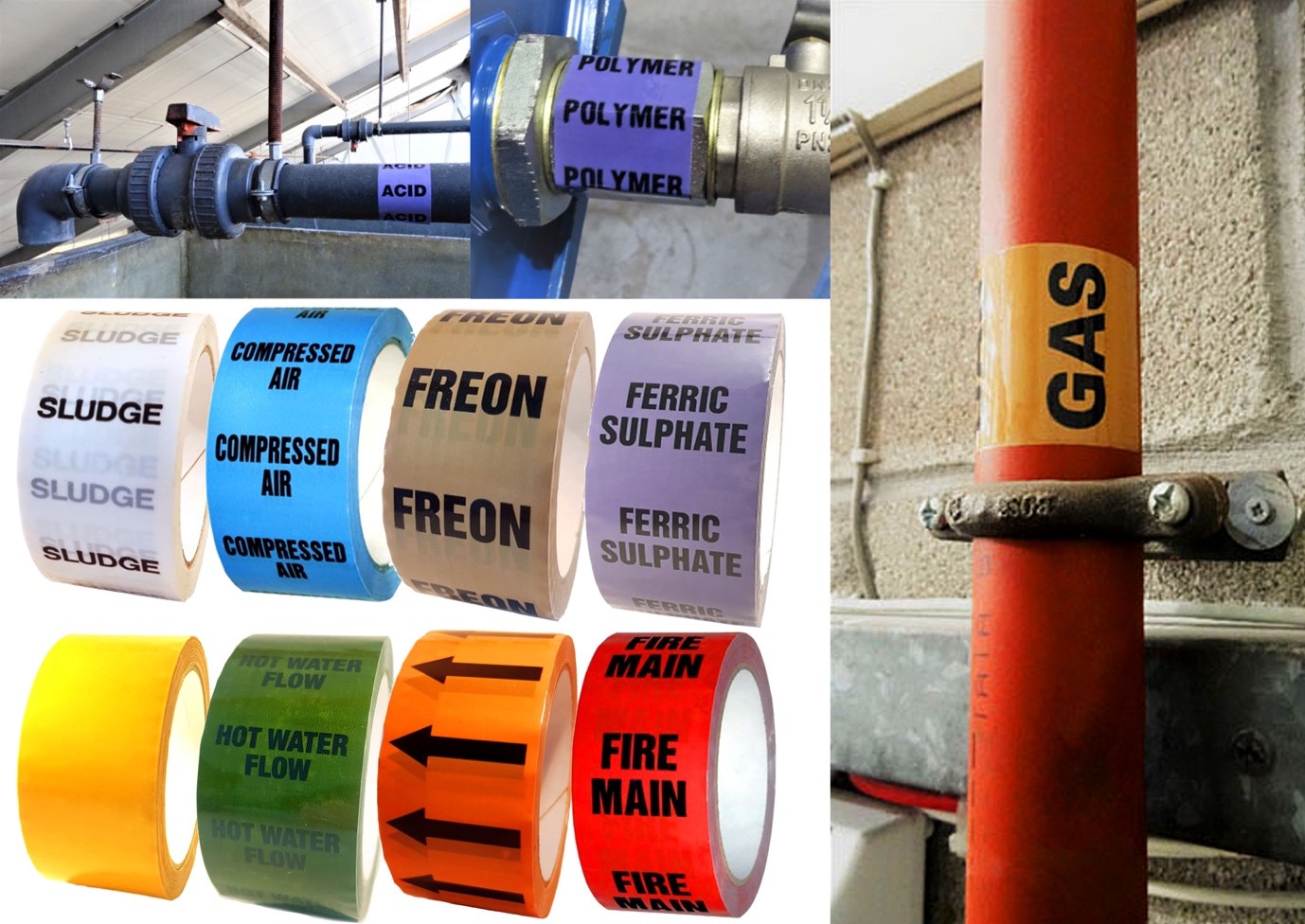
Identifying pipes is essential to keep workers safe and maintenance organised. No plumber or engineer wants to work on unidentified pipes.
Not only must labels be placed correctly, but the correct colours need to satisfy a specific colour scheme which communicates a pipe’s contents.
Discover how to use pipe identification labels in line with British standards, here.
BS 1710 Pipe Marking Standards
This legislation was penned in 1984 to direct how pipelines, ducting and electrical cables should be labelled.
Labels and tapes are essential to warn of the risks associated with certain pipelines. Without these standards, accidents and injuries occur.
These standards dictate that certain colours should be used in specific patterns, and these colours are listed in an associated colour code.
The Colour Code
The BS 1710 colour code has three categories:
- Basic Identification Colours (8 colours)
- Safety Colours (4 colours)
- Code and Other Colours (11 colours)
The basic identification colours used are dependent on the type of liquid a pipe is transporting. They are as follows:
- Water - Green 12D45
- Steam – Silver-Grey 10A03
- Oils – Brown 06C39
- Gases – Yellow ochre 08C35
- Acids & Alkalis – Violet 22C37
- Air – Light blue 20E51
- Electrical – Orange 06E51
- Fire services – Red 04E53
- Other – Black 00E53
Safety colours are an addition to the basic identification colours and are used by emergency services. The other colours category is not of primary focus for labelling and safety.
How to Apply Pipe Identification Labels Correctly
The BS 1710 standards require information to be conveyed in set ways. Pipe content names, symbols, numbers or abbreviations must be printed in black or white, whichever has the best contrast.
As for application, the labels must be placed directly onto the pipe, so they’re legible. The background colour of the label must match the safety identification colour from the above colour code.
Not only that, but the label must also convey information through one of the following methods:
- The full name of the pipe’s contents
- A common abbreviation
- The chemical symbol
- A refrigerant number
- Correct colour band
By following this code, there is plenty of information available to keep people safe and maintenance efficient.
Buy Pipe Identification Labels Today
Label Source stocks an extensive range of pipe identification labels in many colour bands. Whatever your pipe identification needs, our stock has you covered with clear and durable labels.